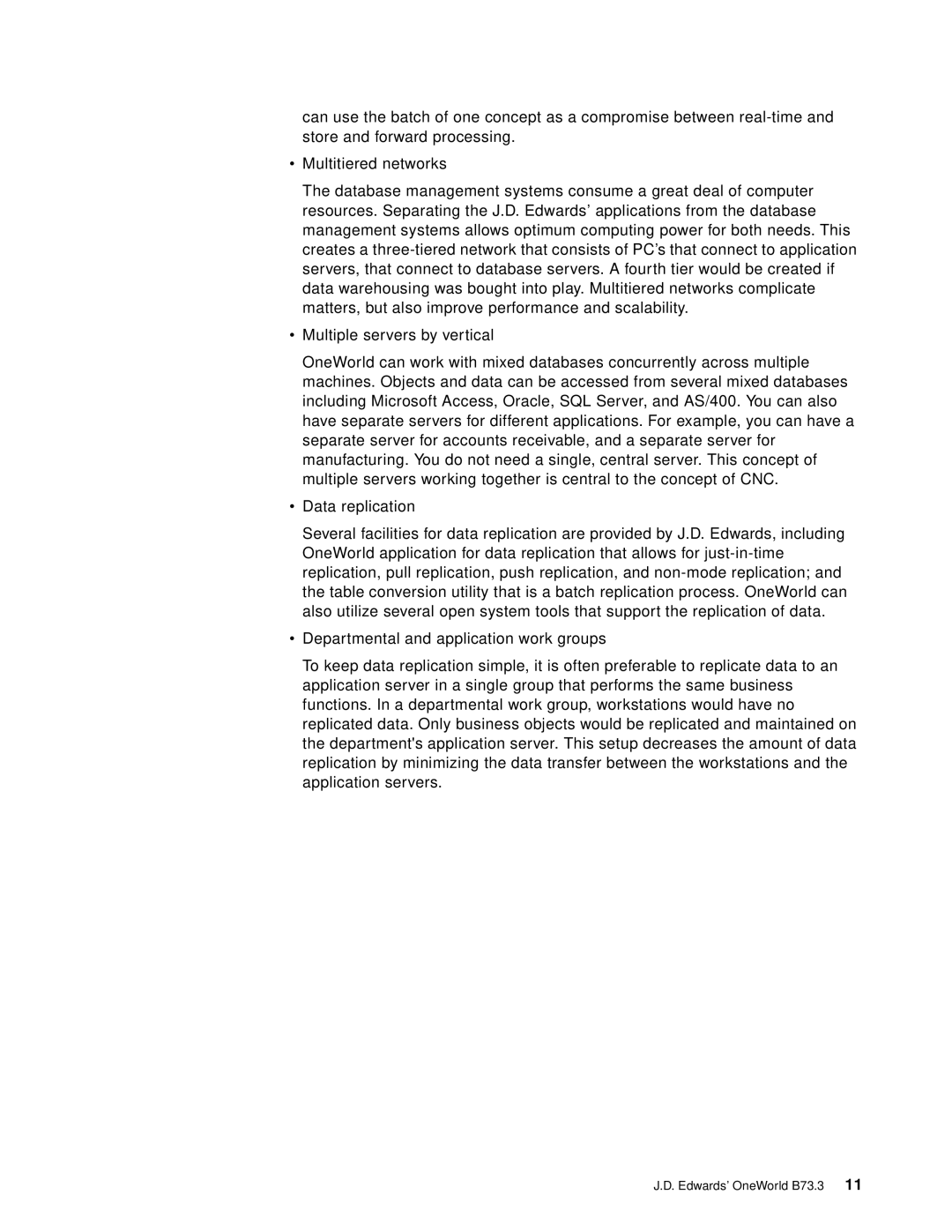can use the batch of one concept as a compromise between
•Multitiered networks
The database management systems consume a great deal of computer resources. Separating the J.D. Edwards’ applications from the database management systems allows optimum computing power for both needs. This creates a
•Multiple servers by vertical
OneWorld can work with mixed databases concurrently across multiple machines. Objects and data can be accessed from several mixed databases including Microsoft Access, Oracle, SQL Server, and AS/400. You can also have separate servers for different applications. For example, you can have a separate server for accounts receivable, and a separate server for manufacturing. You do not need a single, central server. This concept of multiple servers working together is central to the concept of CNC.
•Data replication
Several facilities for data replication are provided by J.D. Edwards, including OneWorld application for data replication that allows for
•Departmental and application work groups
To keep data replication simple, it is often preferable to replicate data to an application server in a single group that performs the same business functions. In a departmental work group, workstations would have no replicated data. Only business objects would be replicated and maintained on the department's application server. This setup decreases the amount of data replication by minimizing the data transfer between the workstations and the application servers.
